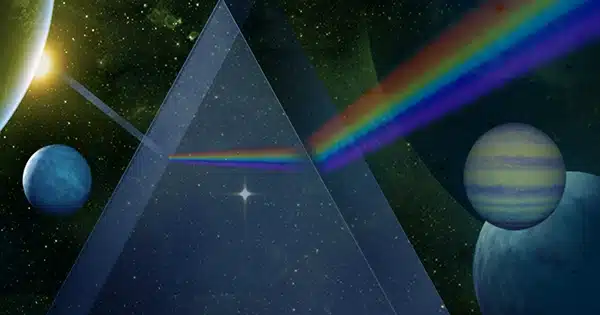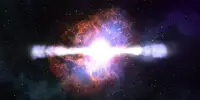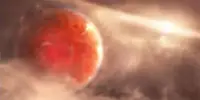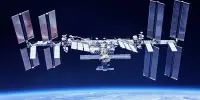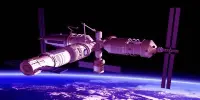Exoplanet research is an important component of the James Webb Space Telescope’s scientific objectives. We asked NASA’s Goddard Space Flight Center’s Deputy Observatory Project Scientist Christopher Stark to inform us about one of the methods Webb examines other worlds.
Exoplanets are worlds that circle other stars and can be studied using NASA’s James Webb Space Telescope. Webb, in particular, can immediately identify some of these planets. Directly finding worlds orbiting other stars is a difficult task. Even the closest stars are still so far away that it appears that a human hair held at arm’s length is all that separates their worlds. When attempting to view the planet at these minute angular dimensions, its weak light is obscured by the brightness of its host star.
The Near-Infrared Camera (NIRCam) and Mid-Infrared Instrument (MIRI) coronagraphic settings are fortunately what Webb needs for the task. The light from a faraway star is blocked by Webb’s coronagraphs, but the light from a faint planet can still pass through and reach the instruments. Similar to how we use the visor in our vehicle at dusk or dawn to see the automobiles in front of us, Webb does this but with a much fancier “visor.”
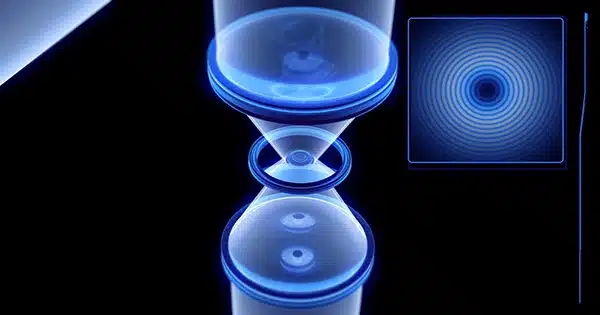
There are several key locations dubbed “planes” along the path light travels through Webb’s optics. The “image plane” is where the faraway sky, including all astronomical objects, is in focus. The “pupil plane” focuses on the surface of the main mirror, which was used to create Webb’s “selfie.” To improve performance, all of Webb’s coronagraphs literally block out undesirable starlight in both the image and pupil planes. The majority of Webb’s image plane filters, which look like opaque patches or bars, eliminate sunlight by simply hiding it in the picture. MIRI’s “four-quadrant phase masks” are an exception, as they move the wave-tops of one portion of the wave of light so that it cancels out with another part via a process known as “destructive interference.”
However, due to the wave nature of light, the image plane masks can’t completely block the star. So Webb uses additional pupil plane masks, also called Lyot stops, to remove much of the remaining starlight. These pupil plane masks look very different from the hexagonal primary mirror (the telescope “pupil”). As a consequence, as seen in the images above, things imaged with the coronagraphs do not display Webb’s distinctive six-spiked diffraction pattern.
The NIRCam device from Webb has five coronagraphic masks that can be set to view at various wavelengths spanning from 1.7 to 5 microns. Webb’s MIRI device features four coronagraphic masks with set wavelengths ranging from 10 to 23 microns. The coronagraphs can detect things as close to the star as 0.13 arcseconds and as far away as 30 arcseconds, corresponding to circumstellar distances varying from a few Astronomical Units (au) to hundreds of au around nearby stars. One AU is the same as the space between Earth and the Sun.
Webb’s coronagraphs don’t completely eliminate a star’s radiation in spite of the covers. Webb’s scientists will meticulously apply a variety of “point spread function (PSF) subtraction methods” to eliminate the last traces of light. Simply put, this means measuring the pattern of the residual starlight and then subtracting it from the science image. In the end, what remains is a noisy-looking pattern, which ultimately limits the faintest detectable exoplanet. This limit is described in terms of “contrast,” or the brightness difference between the star and the lowest visible planet. Webb’s NIRCam and MIRI coronagraphs showed contrasts greater than 10-5 and 10-4 at 1-arcsecond separation, respectively, during startup.
Webb’s large primary mirror and infrared capabilities make its coronagraphs uniquely suited to study faint infrared objects and will complement other instruments currently observing at other wavelengths, such as Hubble’s STIS coronagraph and multiple instruments on ground-based observatories. Exoplanet astronomers will mainly use Webb’s coronagraphs to detect giant extrasolar planets that are still warm from being formed, like those shown above, which are the first images of an exoplanet at wavelengths longer than 5 microns. Webb will also excel at imaging dense circumstellar disks of debris generated by the asteroids and comets in these exoplanetary systems, as well as protoplanetary disks in which planets are still forming. Webb’s coronagraphs can even be used for extragalactic astronomy, allowing researchers to investigate host galaxies with bright active galactic centers.
Webb’s coronagraphs won’t be able to reveal all the secrets of a planetary system. To image planets like our own around nearby Sun-like stars, we’ll need to observe even closer to the star and be able to detect planets just one ten-billionth the brightness of the star. Future missions must be completely designed around next-generation coronagraphs to accomplish this. Thankfully, NASA is already investigating it. A technology showcase device to evaluate next-generation coronagraph technology will be mounted on the organization’s upcoming Nancy Grace Roman Space Telescope. And, following the recommendations of the 2020 Astrophysics Decadal Survey, NASA is laying the groundwork for further technology development for a Habitable Worlds Observatory mission concept, a telescope that would be as large as Webb, operating in the same wavelengths as Hubble, but designed to find truly Earth-like exoplanets around other stars and search them for signs of life.
